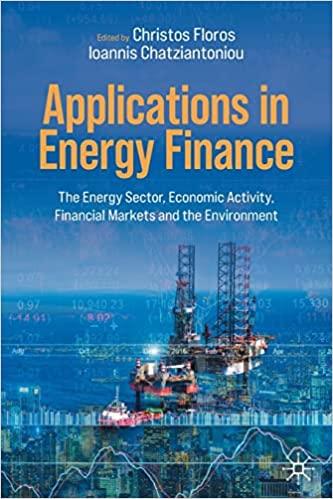Question
Karen Johnson, CFO, for Raucous roasters (RR), a specialty coffee manufacturer, is rethinking her companys working capital policy in light of a recent scare she
Karen Johnson, CFO, for Raucous roasters (RR), a specialty coffee manufacturer, is rethinking her companys working capital policy in light of a recent scare she faced when RRs corporate banker, citing a nationwide credit crunch, balked at renewing RRs line of credit. Had the line of credit not been renewed, RR would not have been able to make payroll, potentially forcing the company out of business. Although the line of credit was ultimately renewed, the scare has forced Johnson to examine carefully each component of RRs working capital to make sure it is needed, with the goal of determining whether the line of credit can be eliminated entirely. In addition to (possibly) freeing RR from the need for a line of credit, Johnson is well aware that reducing working capital will improve free cash flow.
Historically, RR has done little to examine working capital, mainly because of poor communication among business functions. In the past, the production manager resisted Johnsons efforts to question his holding of raw materials, the marketing manager resisted questions about finished goods, the sales staff resisted questions about credit policy (which affects accounts receivable), and the treasurer did not want to talk about the cash and securities balances. However, with the recent credit scare, this resistance has become unacceptable and Johnson has undertaken a company-wide examination of cash, marketable securities, inventory, and accounts receivable levels.
Johnson also knows that decisions about working capital cannot be made in a vacuum. For example, if inventories could be lowered without adversely affecting operations, then less capital would be required, and free cash flow would increase. However, lower raw materials inventories might lead to production slowdowns and higher costs, and lower finished goods inventories might lead to stockouts and loss of sales. So, before inventories are changed, it will be necessary to study operating as well as financial effects. The situation is the same with regard to cash and receivables.
Johnson has begun her investigation by collecting the ratios shown in the Ch 16 Mini Case spreadsheet in the Chapter 16 Tool Kit (Links to an external site.). You are being asked to advise on the working capital policy for RR.
Use the information within the chapter to answer the following questions:
- Johnson plans to use the ratios depicted in the spreadsheet as the starting point for discussions with RRs operating team. Based on the data, explain whether RR seems to be following a relaxed, moderate, or restricted current asset usage policy.
- Identify how one can distinguish between a relaxed but rational working capital policy and a situation in which a firm simply has excessive current assets because it is inefficient. In a paragraph or two, explain whether you think RRs working capital policy seems appropriate.
- Calculate the firms cash conversion cycle given that annual sales are $660,000 and cost of goods sold represents 90% of sales. Assume a 365-day year.
- In a paragraph or two, explain whether or not there is reason to think RR may be holding too much inventory.
- In a paragraph or two, explain the impact of high levels of accruals, such as accrued wages or accrued taxes. Is it likely that RR could make changes to accruals?
- In an attempt to better understand RRs cash position, Johnson developed a cash budget for the first 2 months of the year. She has the figures for the other months, but they are not shown in the Ch 16 Mini Case spreadsheet.
- In a paragraph or two, explain what the cash budget shows regarding the target cash level.
- In a paragraph or two, explain whether or not you think depreciation expenses should be explicitly included in the cash budget.
- In the preliminary cash budget, Johnson has assumed that all sales are collected and thus RR has no bad debts. In a paragraph or two, explain whether or not that is realistic, and, if not, how should RR deal with bad debts in a cash budgeting sense.
Step by Step Solution
There are 3 Steps involved in it
Step: 1

Get Instant Access to Expert-Tailored Solutions
See step-by-step solutions with expert insights and AI powered tools for academic success
Step: 2

Step: 3

Ace Your Homework with AI
Get the answers you need in no time with our AI-driven, step-by-step assistance
Get Started


